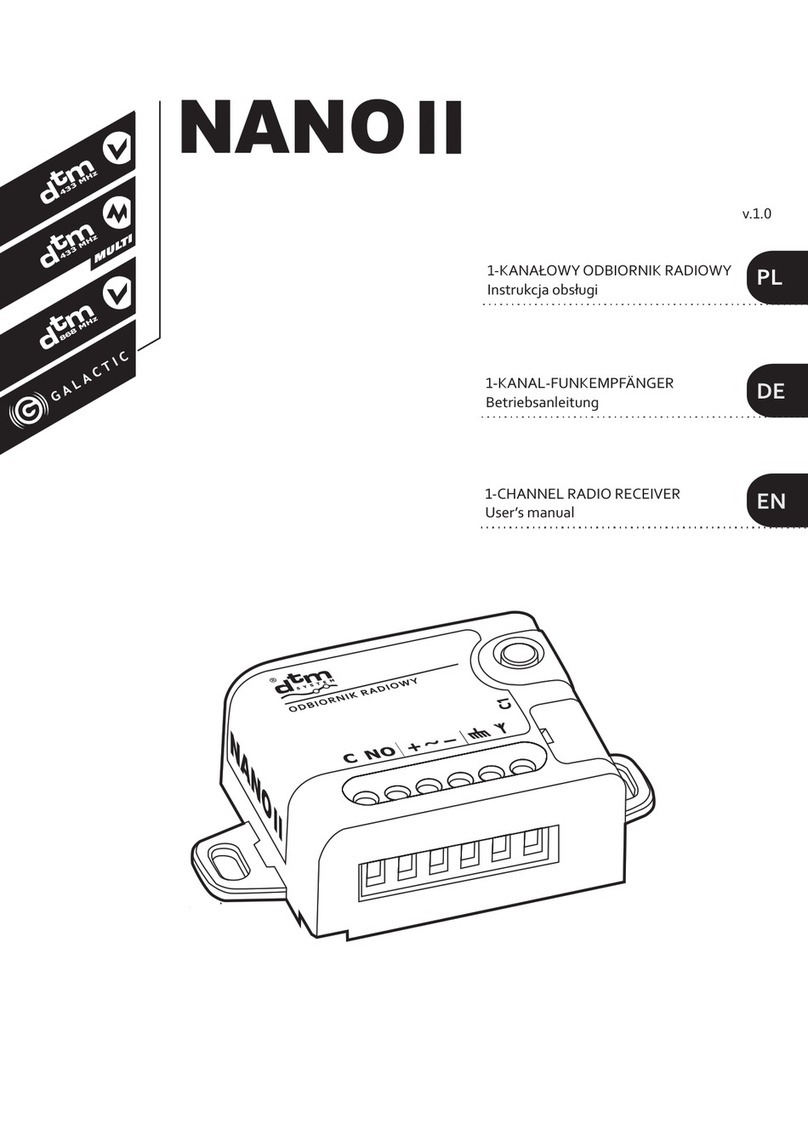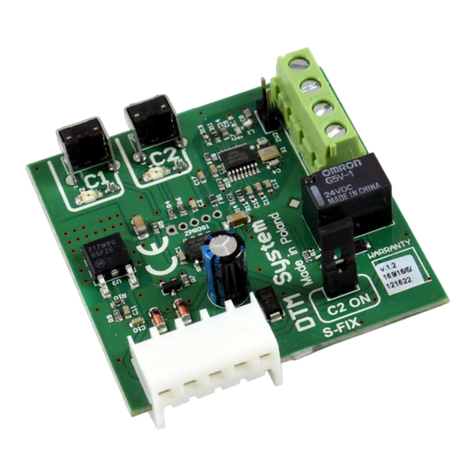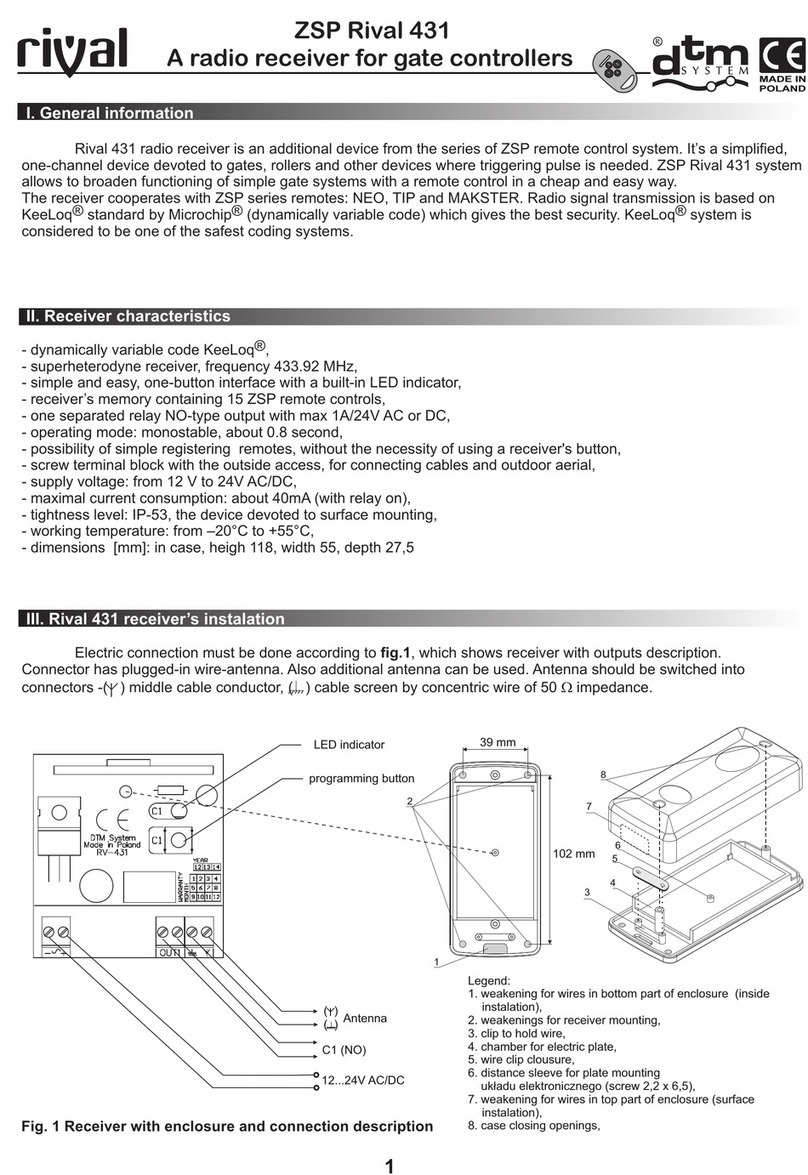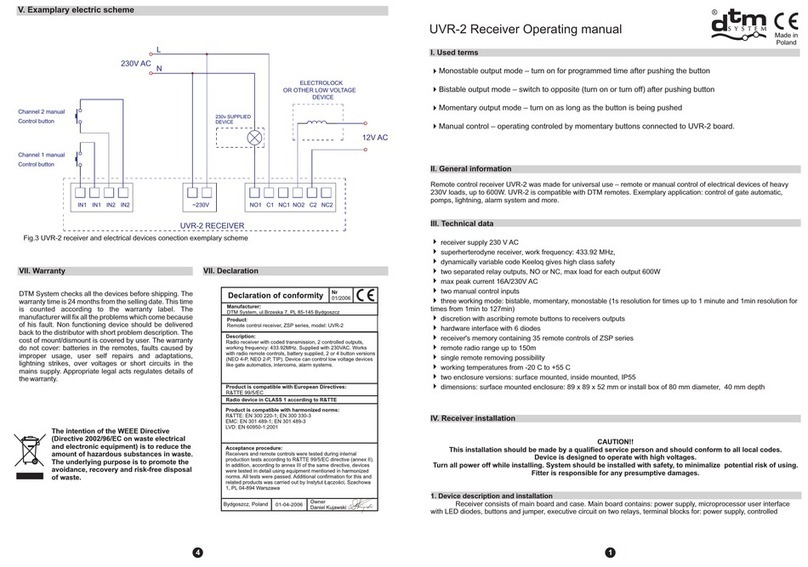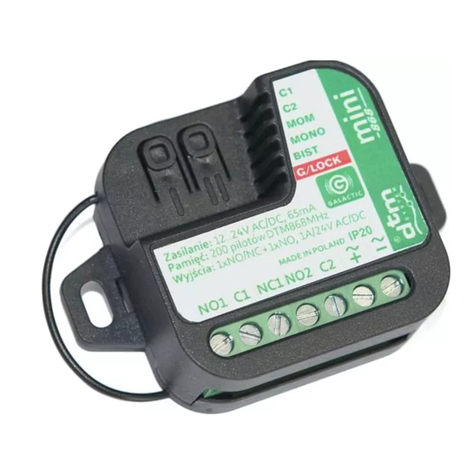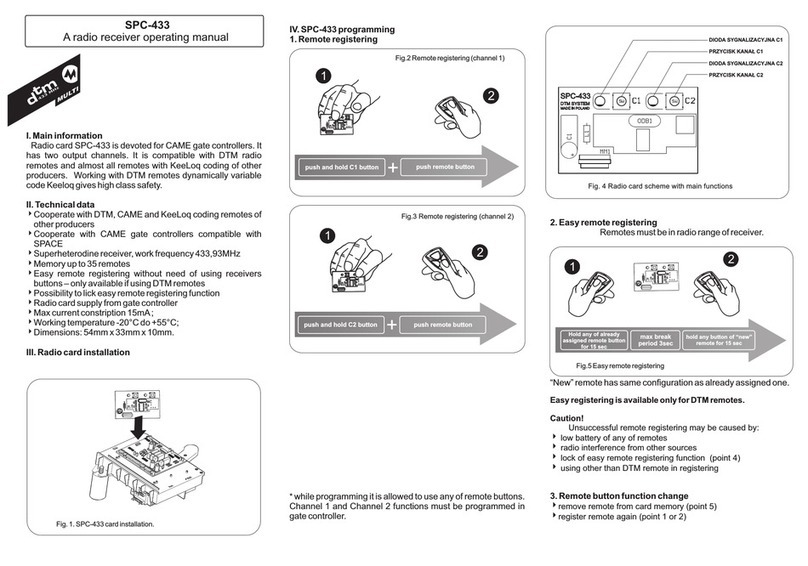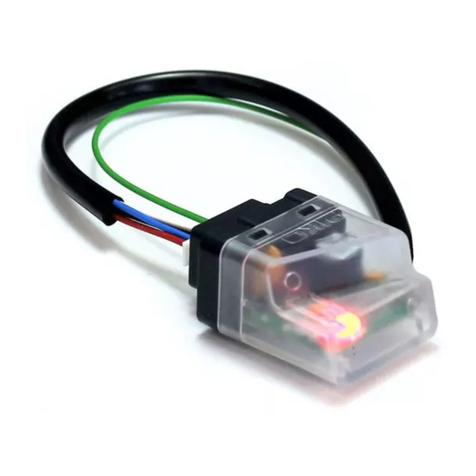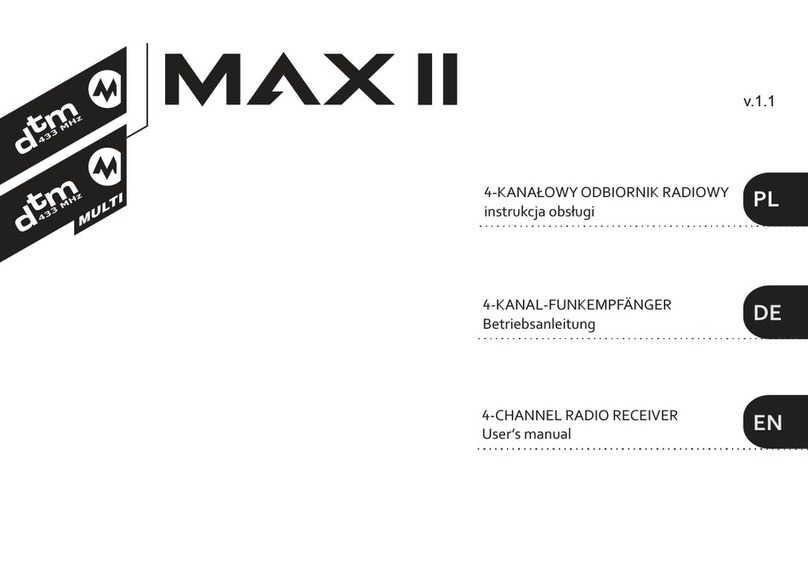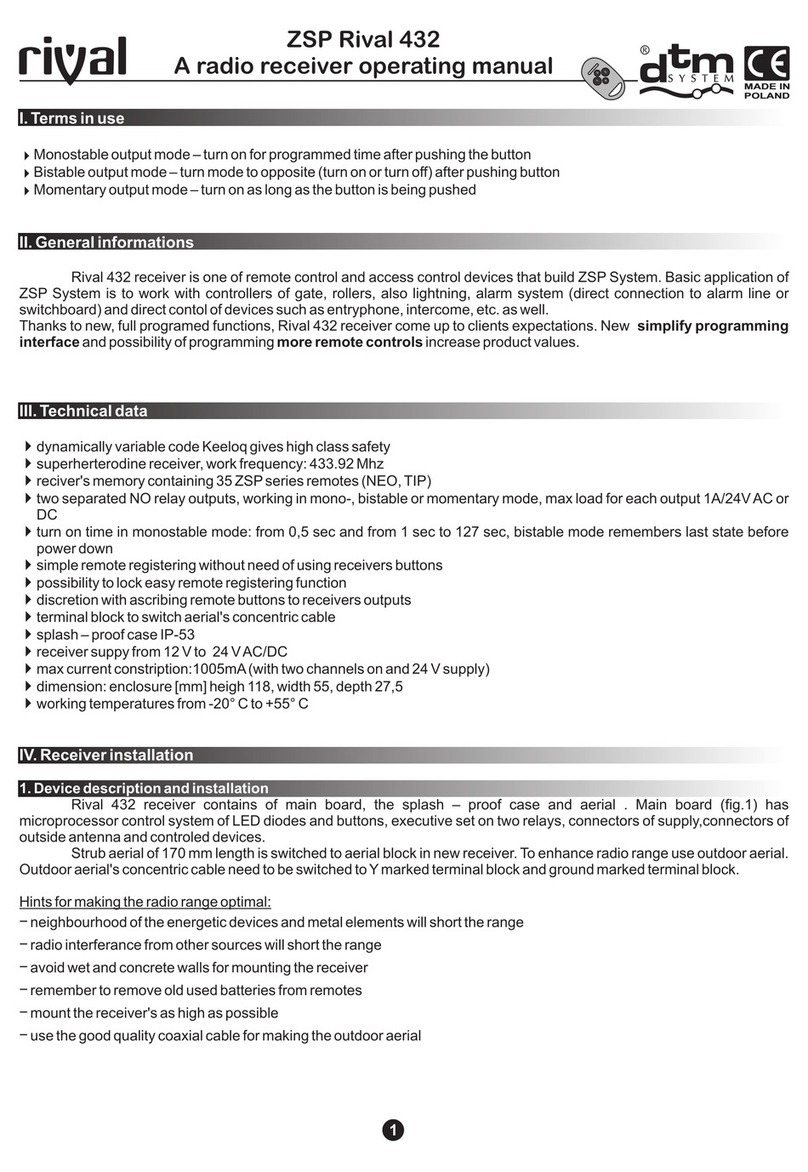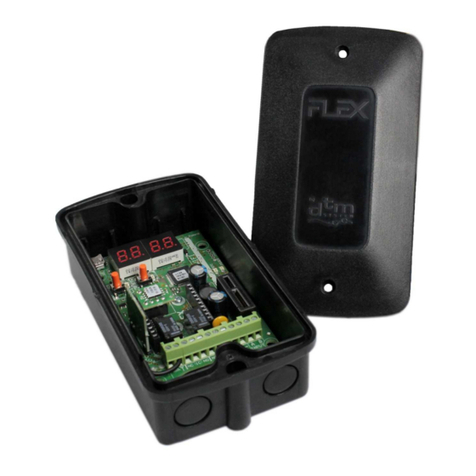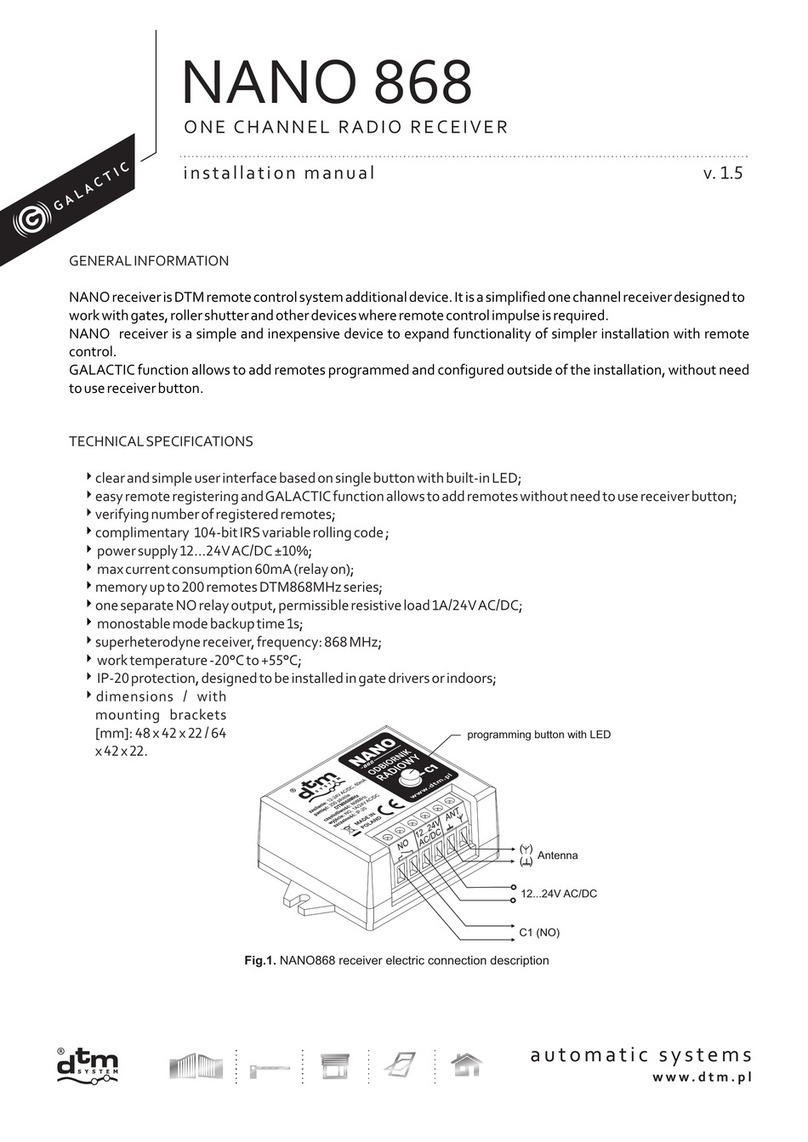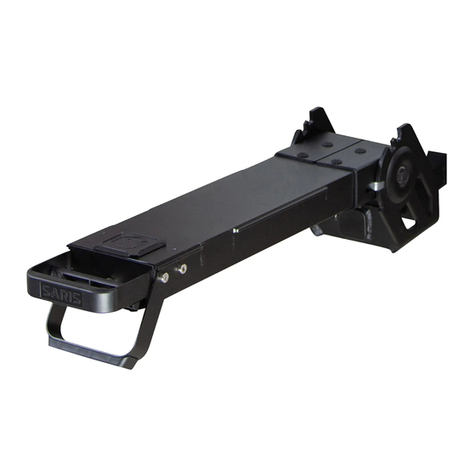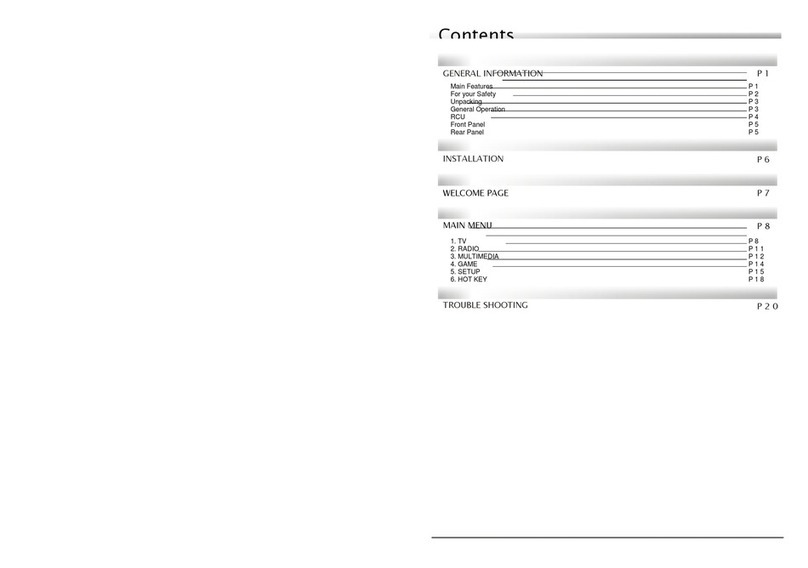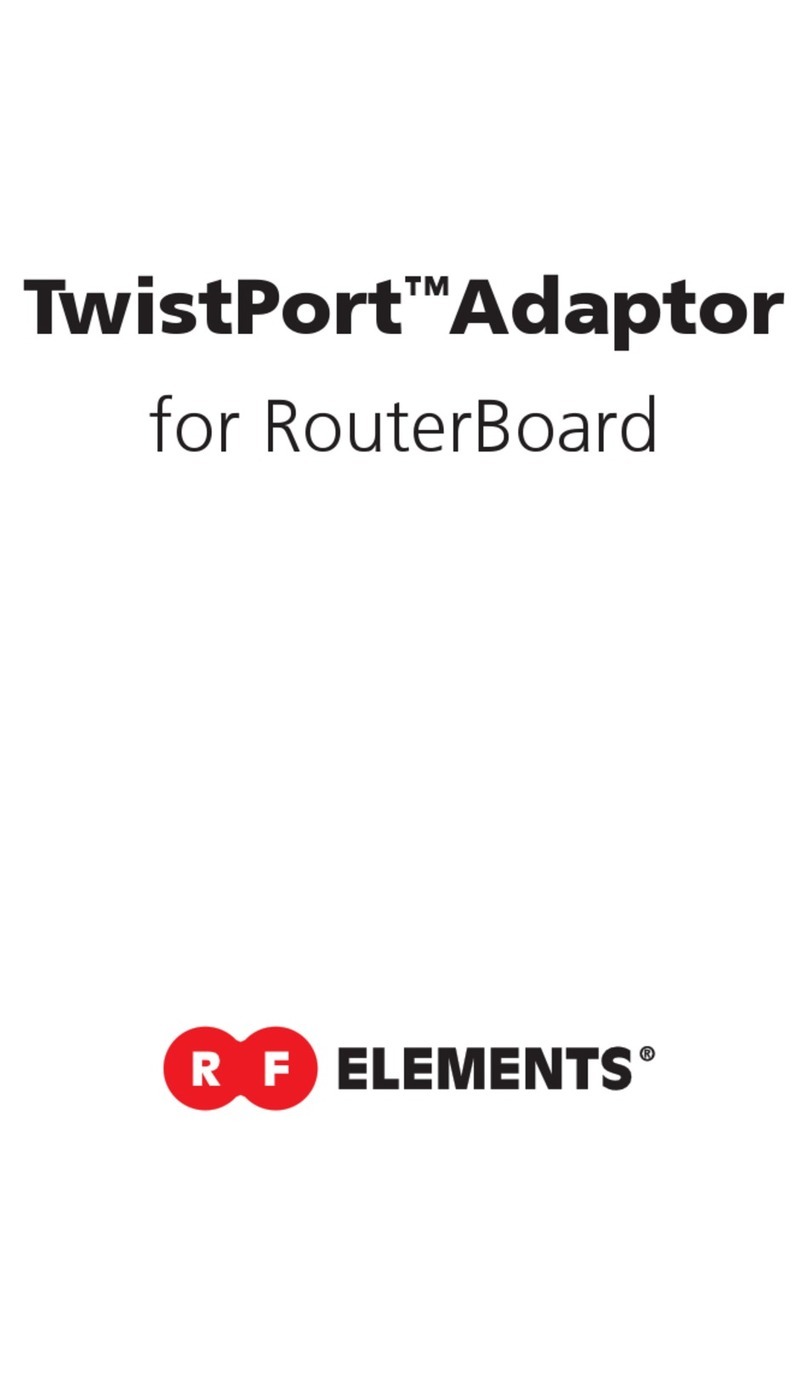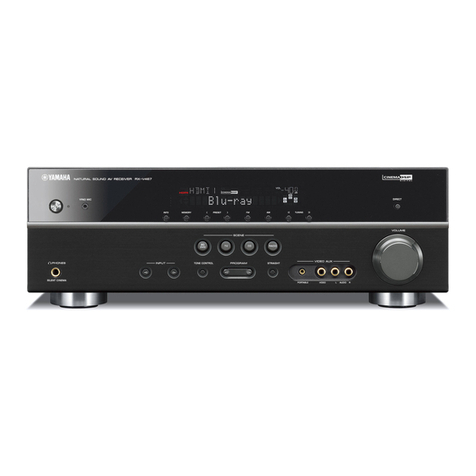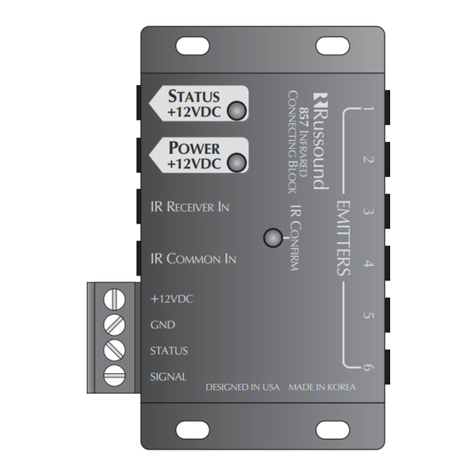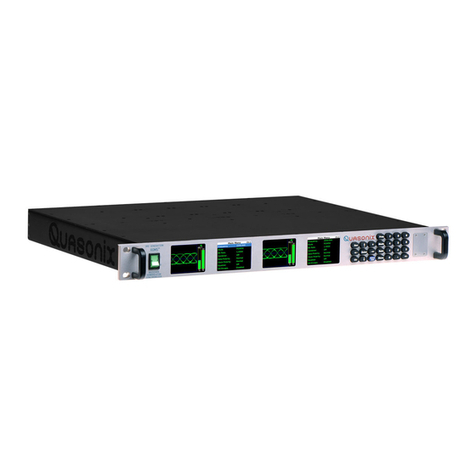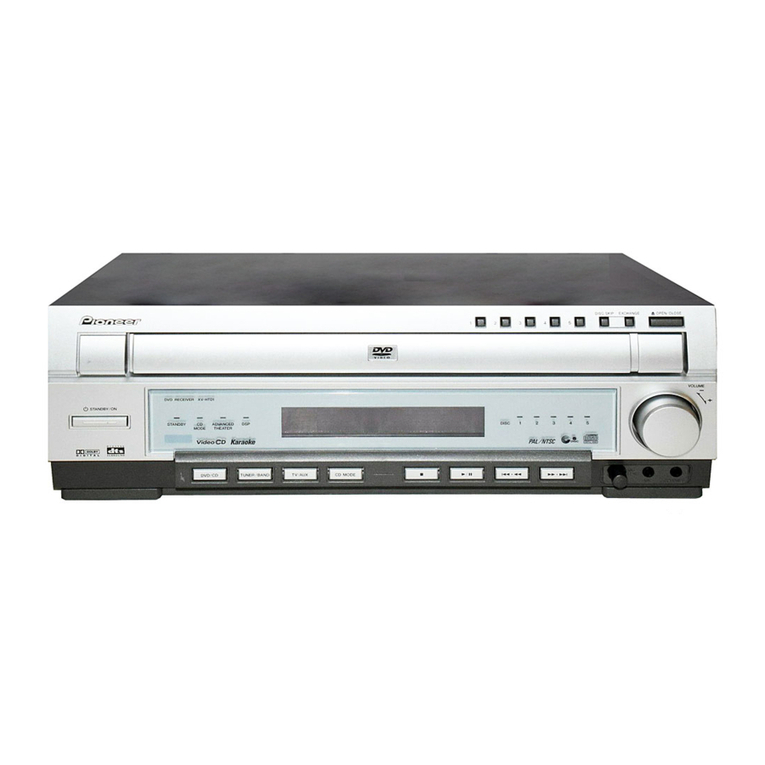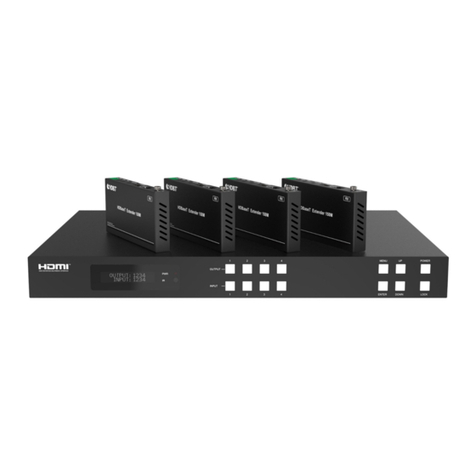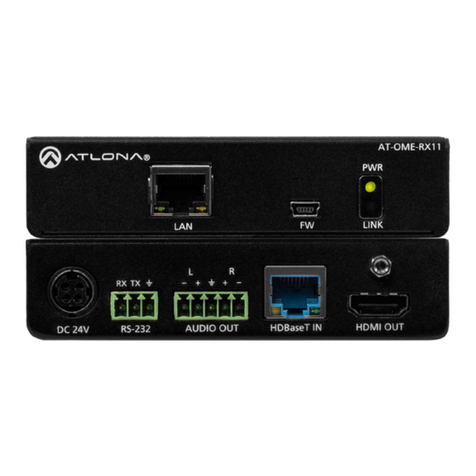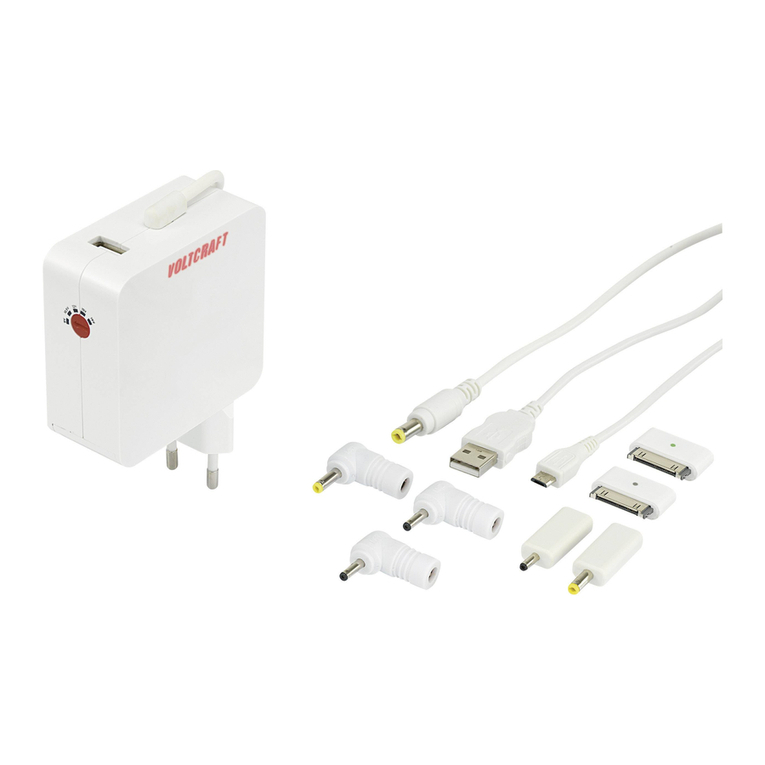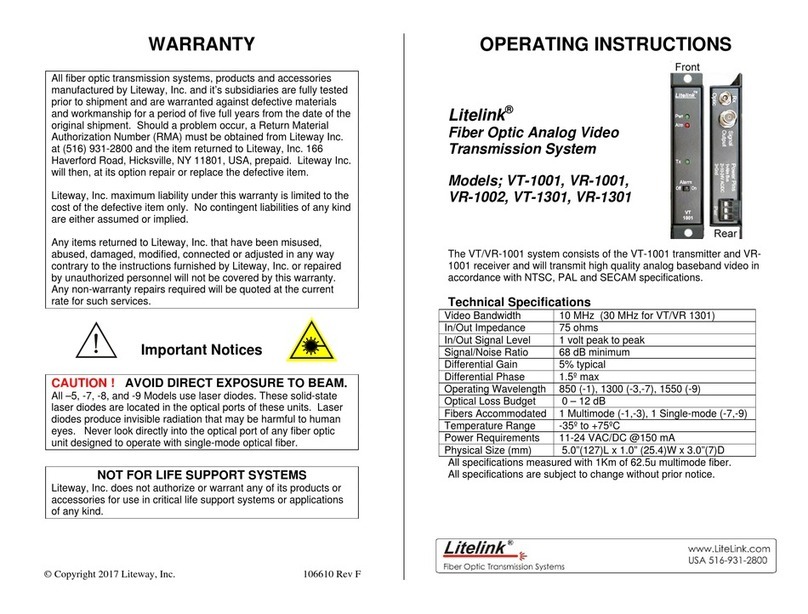
6
Zaciski śrubowe. Podłączenie sterowanego urządzenia
Sterowane urządzenie należy przyłączyć do zacisków wybranego wyjścia odbiornika.
Jeżeli urządzenie wymaga sterowania normalnie otwartego (NO), należy podłączyć je
do zacisków NO i C. W przypadku sterowania normalnie zamkniętego (NC), urządzenie
należy podłączyć do zacisków NC i C.
Antena
Fabrycznie odbiornik wyposażony jest w prętową antenę na obudowie. W celu
zwiększenia zasięgu radiowego można zastosować standardową antenę zewnętrzną,
używając do podłączenia kabla koncentrycznego o impedancji 50Ω. Kabel
koncentryczny anteny podłączyć do zacisku oznaczonego symbolem Y (środkowa żyła
kabla) i do zacisku oznaczonego symbolem GND (ekran kabla do masy układu).
Moduł Bluetooth
Odbiornik wyposażony jest w moduł Bluetooth do komunikacji z dedykowaną aplikacją
BT Control. Na module umieszczona jest etykieta z numerem MAC pozwalającym
zidentyfikować odbiornik na liście dostępnych urządzeń wyświetlanych w aplikacji.
Dioda POWER
Po włączeniu zasilania odbiornika, następuje automatyczne przejście do trybu pracy
odbiornika, sygnalizowane zaświeceniem diody POWER. W trybie pracy możliwe jest
sterowanie kanałami odbiornika.
Moduł M2BT
Moduł pamięci M2BT zawiera dane konfiguracyjne odbiornika oraz bazę zapisanych
pilotów. Umieszczony został na podstawce co ułatwia przełożenie go do innego
odbiornika, na przykład przy awarii urządzenia.
Diody sygnalizacyjne kanałów
Każde załączenie kanału sygnalizowane jest zaświeceniem diody kanału.
Dioda CON
Na płycie odbiornika znajduje się dioda CON. Zapala się w momencie połączenia, za
pośrednictwem Bluetooth, odbiornika z aplikacją BT Control.
Zegar czasu rzeczywistego. Dioda RTC
Odbiornik wyposażony jest w zegar czasu rzeczywistego. Dioda RTC świeci, gdy czas nie
jest ustawiony. Ustawienia czasu należy dokonać w aplikacji BT Control.
Przycisk SW1
Przycisk służy to formatowania pamięci odbiornika.
